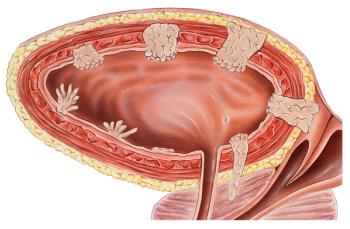
Genomic–Clinical Classifier for Prostate Cancer Better Predicts Risk of Metastasis
A novel classification system that incorporates genomic risk with clinical variables was able to accurately identify prostate cancer patients at low, intermediate, and high risk for metastasis.
A novel classification system that incorporates genomic risk with clinical variables was able to accurately identify prostate cancer patients at low, intermediate, and high risk for metastasis, according to a new study.
Among the currently most commonly used risk stratification systems is the three-tier National Comprehensive Cancer Network (NCCN) system, which groups prostate cancer patients based on PSA, Gleason score, and clinical T stage. “NCCN risk groups… have the primary intent to predict a patient’s pretreatment risk of biochemical recurrence and were not optimized for survival outcomes or surrogates, such as distant metastases,” wrote study authors led by Daniel E. Spratt, MD, of the University of Michigan School of Medicine in Ann Arbor.
Genomic classifiers have recently emerged to aid in risk stratification, but the authors wrote that it remains unclear how to incorporate these into treatment recommendations. They aimed to combine the 22-gene Decipher score with the NCCN risk grouping to make a more usable and useful scoring system.
The study included two cohorts of prostate cancer patients for training and validation of the system (991 patients), as well as an additional two cohorts (5,937 patients) for reclassification analyses. The scoring system included 0, 1, 2, or 3 points based on NCCN group, added to 0, 1, or 2 points based on Decipher score; this yields three tiers, with low-risk patients at a score of 0–1, intermediate risk patients with a score of 2–3, and high-risk patients with a score of 4–5. Results of the study of this system were
In the training cohort, the 10-year distant metastasis (DM) rates were 3.5% for the low-risk group, 29.4% for the intermediate group, and 54.6% for the high-risk group. These were confirmed in the validation cohorts. Using the low-risk group as a reference, the hazard ratio for DM for the intermediate risk group was 9.3 (95% CI, 4.8–21.5; P < .001), and for the high-risk group it was 21.9 (95% CI, 11.1–50.4; P < .001).
In contrast, the same patients classified according to the standard NCCN risk groups were not as well differentiated. The NCCN low-risk group had a 10-year DM rate of 7.3%, the favorable-intermediate group had a rate of 9.2%, the unfavorable-intermediate group had a rate of 38%, and the high-risk group had a rate of 39.5%.
C-indices were used to compare the ability of the system, the NCCN scoring system, and the Cancer of the Prostate Risk Assessment system to predict DM. The new genomic–clinical system performed best, with a C-index of 0.84, compared with 0.73 and 0.74 for the other two, respectively. Thirty percent of patients classified as low, intermediate, or high by NCCN would be reclassified by the new three-tier system.
The authors concluded that this system, using a commercially available genomic classifier, can “more accurately identify patients at low, intermediate, and high risk of recurrence; and can easily be incorporated into current NCCN guidelines to help inform treatment decisions.”
Newsletter
Stay up to date on recent advances in the multidisciplinary approach to cancer.


























































































